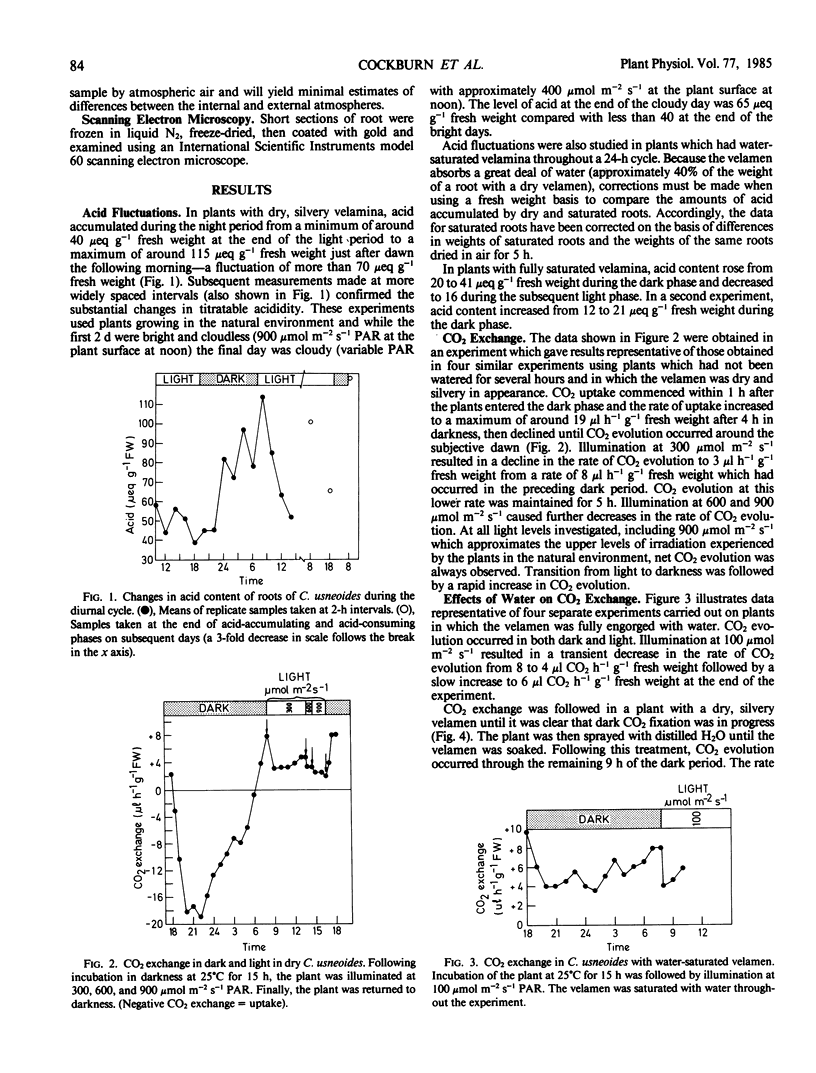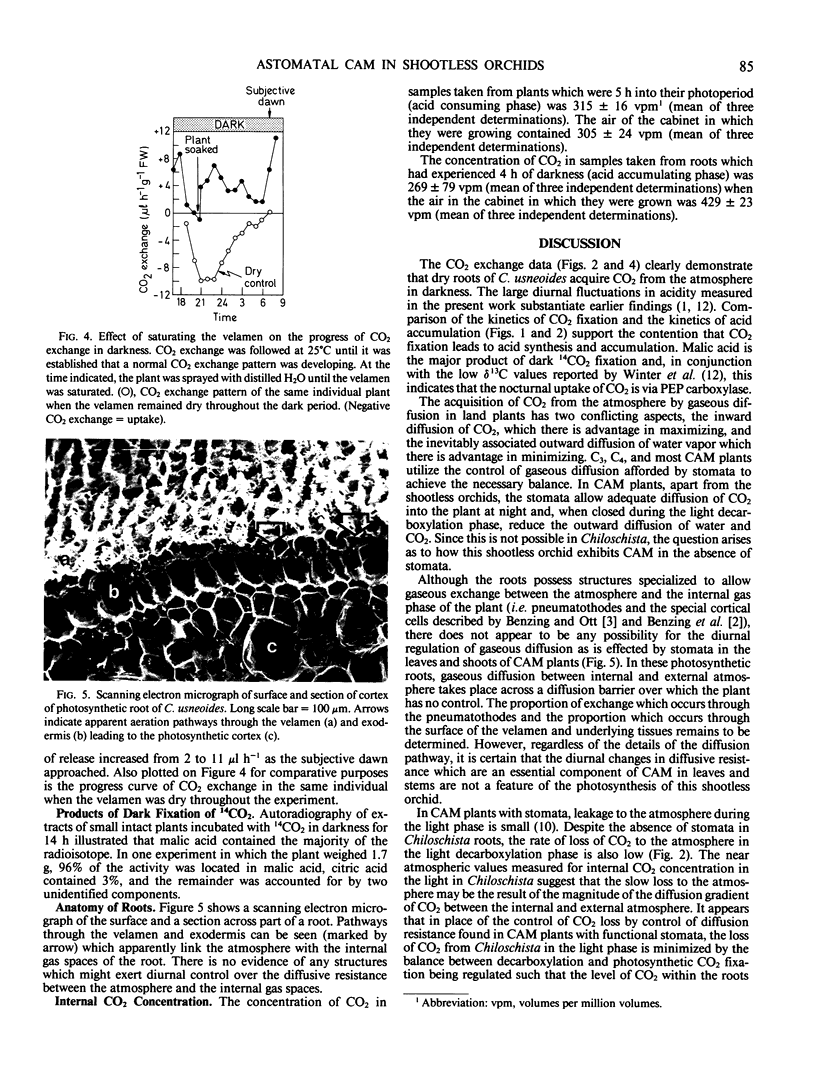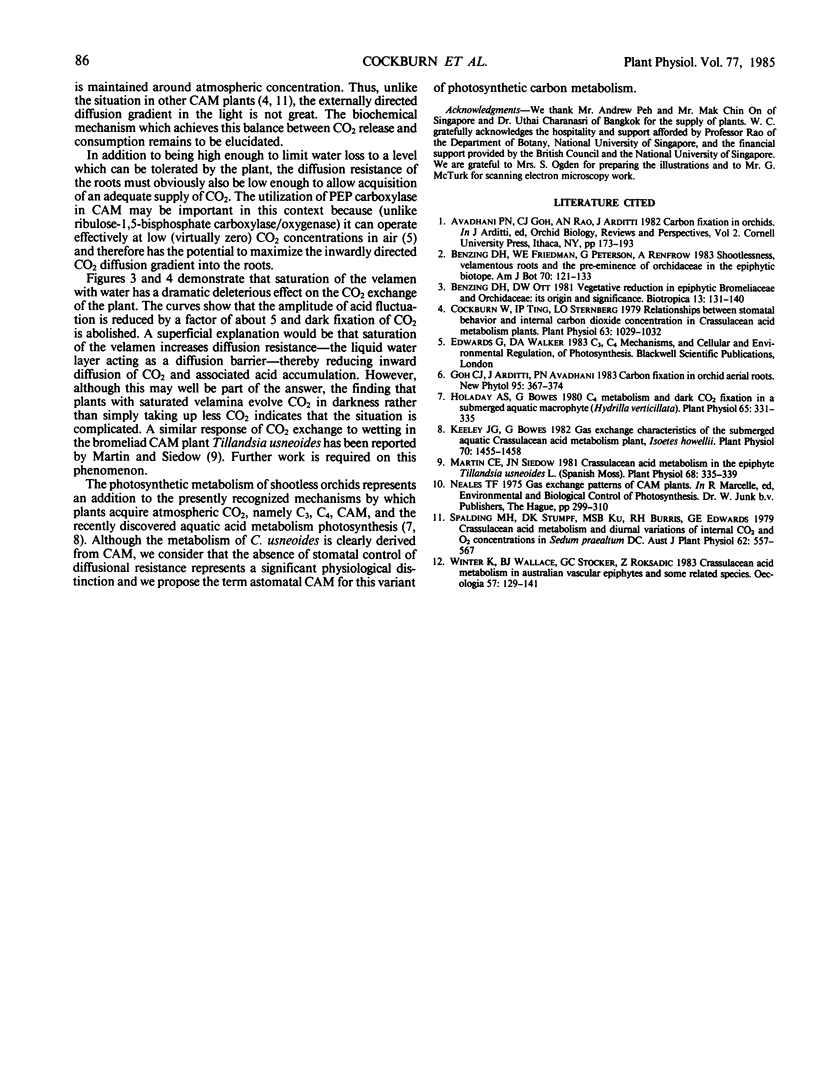Abstract
Photosynthetic carbon assimilation in the roots of a shootless orchid Chiloschista usneoides (DON) LDL involves the synthesis and accumulation of malic acid from CO2 in darkness. Malic acid is consumed in the light.
The roots do not possess stomata or any means of diurnally regulating the diffusive conductance of the pathway between the internal gas phase of the plant and the atmosphere. Regulation of internal CO2 concentration near to atmospheric levels avoids a large net loss of CO2 to the atmosphere during malic acid consumption in the light.
The water-absorbing function of the velamen conflicts with the photosynthetic function of the roots. Plants with water-saturated velamina do not acquire CO2 from the atmosphere at night.
Full text
PDF



Images in this article
Selected References
These references are in PubMed. This may not be the complete list of references from this article.
- Cockburn W. Relationships between Stomatal Behavior and Internal Carbon Dioxide Concentration in Crassulacean Acid Metabolism Plants. Plant Physiol. 1979 Jun;63(6):1029–1032. doi: 10.1104/pp.63.6.1029. [DOI] [PMC free article] [PubMed] [Google Scholar]
- Holaday A. S., Bowes G. C(4) Acid Metabolism and Dark CO(2) Fixation in a Submersed Aquatic Macrophyte (Hydrilla verticillata). Plant Physiol. 1980 Feb;65(2):331–335. doi: 10.1104/pp.65.2.331. [DOI] [PMC free article] [PubMed] [Google Scholar]
- Keeley J. E., Bowes G. Gas Exchange Characteristics of the Submerged Aquatic Crassulacean Acid Metabolism Plant, Isoetes howellii. Plant Physiol. 1982 Nov;70(5):1455–1458. doi: 10.1104/pp.70.5.1455. [DOI] [PMC free article] [PubMed] [Google Scholar]
- Martin C. E., Siedow J. N. Crassulacean Acid Metabolism in the Epiphyte Tillandsia usneoides L. (Spanish Moss) : RESPONSES OF CO(2) EXCHANGE TO CONTROLLED ENVIRONMENTAL CONDITIONS. Plant Physiol. 1981 Aug;68(2):335–339. doi: 10.1104/pp.68.2.335. [DOI] [PMC free article] [PubMed] [Google Scholar]



